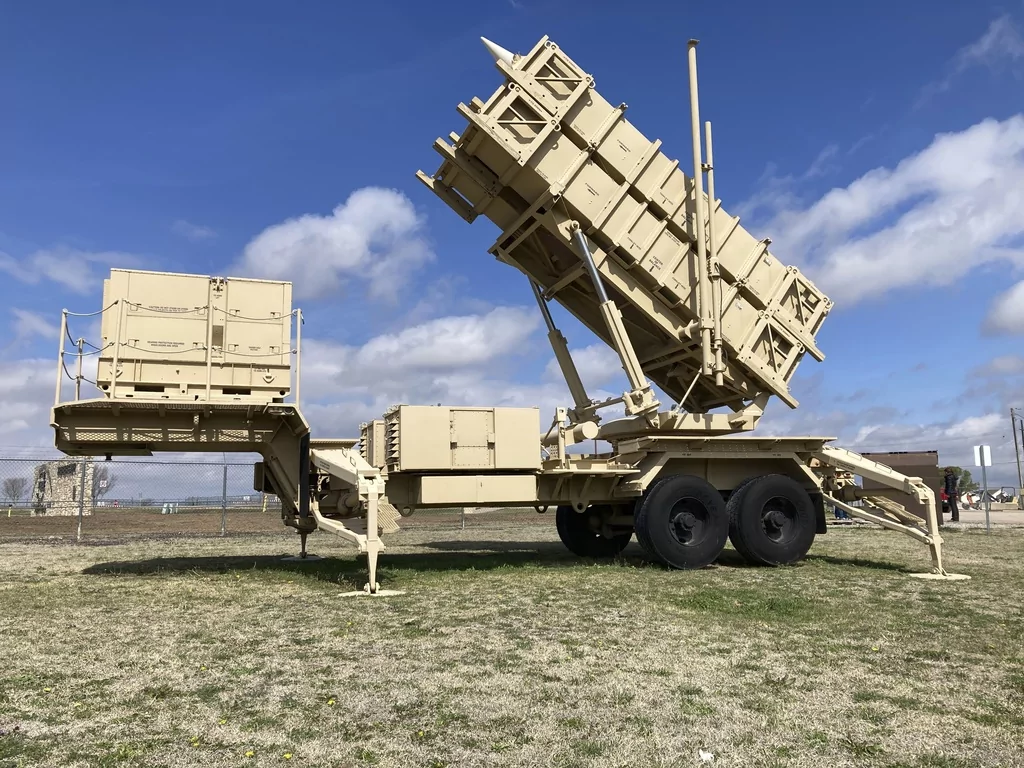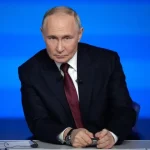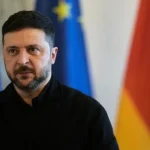

Consider a hypothetical scenario.
It’s 2030. In 2025, Russia compelled Ukraine to a concessionary peace. Desperate for a boost to their sclerotic economies, European Union members quickly released Russia from sanctions. Emboldened by his victory, Putin has spent the interceding years dreaming of the next steps toward building a new Russian imperium. Watching the United States lose 10,000 service personnel in a brutal 2027 war to defend Taiwan, Putin believes Americans won’t support yet another war in Europe to defend a far-flung land. Seeing Peter the Great in the mirror, Putin decides Estonia is up for the taking.
The Russian leader concocts a claim that ethnic Russians in Estonia face a genocidal threat. He invades with a reconstituted army far better trained, led, and equipped than that which invaded Ukraine in February 2022. Suspected by Western intelligence services of suffering early-stage dementia, Putin warns that if NATO supports its Estonian ally with direct force, Russia will use nuclear weapons.
Germany, Spain, Belgium, and other allies refuse to commit forces to Estonia’s defense. Canada can’t constitute reaction forces because it lacks an airlift capability. The French president either goes full throttle in defense of Estonia or goes on television attempting to organize a peace conference at Versailles. Hungary’s Viktor Orban simply flirts with Putin via television. The United Kingdom, Latvia, Lithuania, Norway, Finland, and Poland are the sole allies to quickly mobilize to assist Estonia. The U.S. 82nd Airborne Division, Polish 6th Airborne Brigade, and British 16 Air Assault Brigade quickly drop thousands of paratroopers into Estonia behind Russian lines to support a desperate defense.
What then follows? Who knows. But a positive outcome in tomorrow’s hypothetical war is dependent on shaping NATO to effectively grapple with that prospect today. That brings us to NATO headquarters.
Considering that their respective Truman Hall and Chateau Gendebien residences are fit for royalty, the U.S. ambassador to NATO and supreme allied commander probably want to stay where they are. Nevertheless, the U.S. should now push hard to move NATO headquarters from Brussels, Belgium, to Warsaw, Poland. President Joe Biden has recognized Poland’s key role in NATO and Donald Trump established good relations with Poland as president. They should act in that same vein.
Still, regardless of whoever wins the November presidential election, moving NATO headquarters to Warsaw makes sense. Doing so would send three key strategic messages.
First, the message that America holds continued faith with those eastern flank allies most at risk of Russian aggression. (These are allies, by the way, who deployed troops to Afghanistan and Iraq and support the U.S. on China concerns, sometimes at significant economic cost.)
Second, impressing upon NATO allies that they better be ready to fight tomorrow if they want to stay in the alliance. (A NATO headquarters in Warsaw would very likely be targeted by Russia in a war scenario.)
Third, that America has lost patience with those allies that continue to ignore fair burden sharing and have slept through Vladimir Putin’s Ukraine wake-up call.
This relates directly to Belgium.
While Belgium was saluted by Secretary of State Antony Blinken as “a close NATO ally and a strong partner in security and defense,” its record speaks to an altogether different reality. In 2024, Belgium prefers reaping a tax windfall on seized Russian assets rather than transferring those assets to the benefit of Ukraine. Brussels also retains one of the lowest defense budgets in NATO. It will spend just 1.3% of gross domestic product on defense in 2024, a percentage rate higher only than that of Slovenia, Luxembourg, and Spain. But coming from the nation hosting NATO headquarters, this isn’t just pathetic, it’s insulting.
European Council President Charles Michel shares much of the blame for this sorry state of affairs. A peacock statesman of Europe, Michel has about as much credibility on defense issues as Trump has humility. Michel was Belgian prime minister between 2014 and 2019. That in mind, consider these NATO figures on Belgium’s defense spending as percentage of its GDP since 2014:
2014: 0.97%, 2015: 0.91%, 2016: 0.89%, 2017: 0.88%, 2018: 0.89%, 2019: 0.89%, 2020: 1.01%, 2021: 1.04%, 2022: 1.18%, 2023: 1.21%, 2024 (estimate): 1.30%.
As with every other NATO member, Belgium pledged at the 2014 leaders summit to move toward a 2%-of-GDP defense budget. Now look at those statistics again. They show that Michel actually presided over real terms decreases to the defense budget in multiple years. Note also that since the start of the war in Ukraine, Belgium has increased real terms defense spending by just 0.26% of its GDP. This should lead us to a high confidence assessment: Belgium is a deeply unserious NATO ally.
Fortunately, bearing in mind the aforementioned hypothetical scenario, Poland is a very serious ally. Set to spend an estimated 4.12% of GDP in 2024, Poland leads NATO in terms of percentage of GDP defense spending. (The U.S. 2024 figure is 3.43% of GDP.) Poland also leads NATO in equipment expenditure as a percentage of defense budget. (The NATO target is 20% of total defense budget — Poland spends 51.1%.) This spending isn’t for show and bears cross-party Polish political support.
For reasons of history, geography, and values, the Poles do not particularly trust Putin or Russia. But the Poles guard their concerns with teeth. Today’s Polish military, especially its army and special forces, are highly capable. The Polish army is designed and increasingly equipped to deliver penetrating maneuver warfare in mass and at scale. As such, it would constitute the U.S. Army’s primary ground combat partner in any war in Europe. At the start and at the finish, it would primarily be the Polish and U.S. armies breaking Russian lines and annihilating their formations with aggression and effect. In other words, it would be Polish and American soldiers doing the winning.
CLICK HERE TO READ MORE FROM THE WASHINGTON EXAMINER
Poland deserves respect for this and NATO deserves a home that offers more than good moules-frites.
Trump has rightly pledged “100%” that he would order the defense of a NATO ally that exceeds the 2%-of-GDP defense spending target. But Trump and Biden should both go further. Recognizing the great discrepancy that Belgium and Poland present in terms of what NATO stands for and stands ready to do, both men should pledge that if returned to the Oval Office, they will spare no effort to see NATO headquarters moved to Warsaw.







